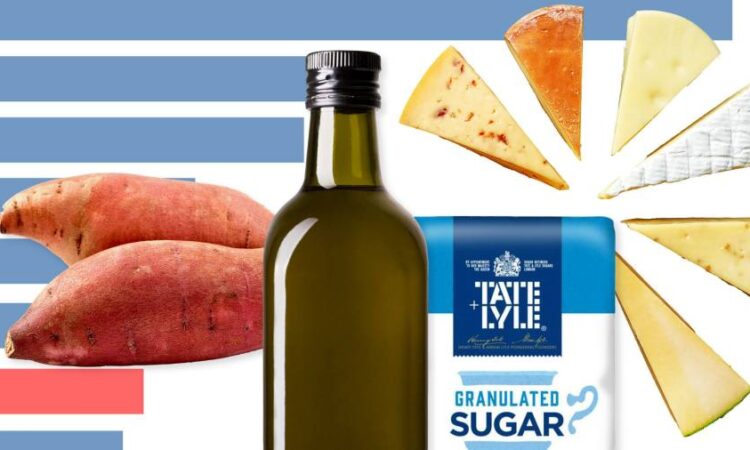
In the week that UK food price inflation hit its highest level in more than 45 years, the detailed official statistics show that if British consumers want to look after the pounds in their pockets, they should eat sweet potato.
Office for National Statistics data shows prices of the orange tuber rose only 2 per cent in the year to March, exactly in line with the Bank of England’s inflation target. Overall food prices, by contrast, jumped 19.2 per cent.
The reasonable cost of sweet potatoes — the only item the ONS measures in its “other tubers and products of tuber vegetables” category — will do very little to help households with the cost of living, however. Families in the UK, on average, dish out only £0.30 on them in every £1,000 they spend. Food in general accounts for £107.
The soaring prices across almost all food categories are both changing household behaviour and worrying policymakers.
Food categories dominate the list of items in the ONS consumer inflation measure where prices are rising rapidly.
Olive oil prices rose 49 per cent in the year to March; sugar was up 32 per cent; and milk, cheese and other dairy products all had inflation rates over 30 per cent.
The BoE knows it has no hope of meeting its inflation target until food price inflation drops considerably.
For their part, households have reacted to the soaring price of food by shopping in cheaper supermarkets, buying less and seeking to trade down to less expensive items.
In the latest retail sales figures, the volume of goods bought in non-specialised food stores, which includes supermarkets, fell 4.4 per cent in the year to March. This drop came even as spending in these stores rose 8.9 per cent.
Spending more and getting less has been the reality for most UK households.
Esme Harwood, a director at Barclaycard, said research by the payments company in March found almost all shoppers were concerned about food price inflation and more than six in 10 were looking for ways to economise, either by cutting out luxuries, finding special offers or seeking to avoid waste.
“The below-inflation rise in grocery spending shows that Brits are still trying their hardest to shave money off their weekly shop,” she said.
Fraser McKevitt, head of retail and consumer insight at Kantar, said the main way households were reacting was by “buying cheaper goods”. Data collected by the market research group showed spending on lower cost own-label products up 16.5 per cent in the year to March, while spending on branded goods rose only 7 per cent.
The concern among policymakers about food inflation is that shoppers know the prices of everyday items and notice when they rise. This threatens to exaggerate perceptions of overall price increases and make people more militant about seeking pay rises, thereby baking in higher inflation.
UK policymakers are not alone in this concern because food inflation has been high in many advanced economies. The food inflation rate for the EU as a whole was identical to that of the UK in March at 19.2 per cent and was higher for Portugal, Sweden and Germany, among others. The rate in Hungary hit 44.8 per cent in March.
Retailers insist food inflation represents the delayed effect of energy and commodity price rises during the past year along with poor harvests and a period of sterling weakness, suggesting the crisis for households might soon end.
Helen Dickinson, chief executive of the British Retail Consortium, a trade body, said food price inflation was “likely to slow in the coming months as we enter the UK growing season”.
High food prices did not reflect greed on the part of large supermarkets, Dickinson insisted. “Retailers remain committed to helping their customers and keeping prices as low as possible,” she said.






